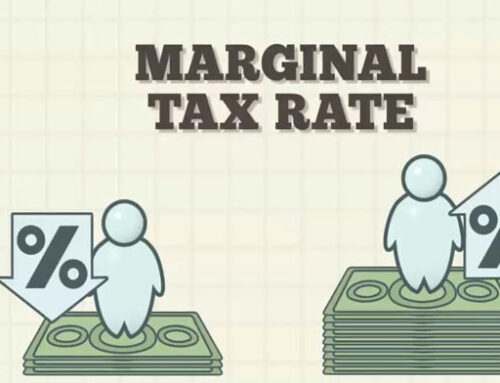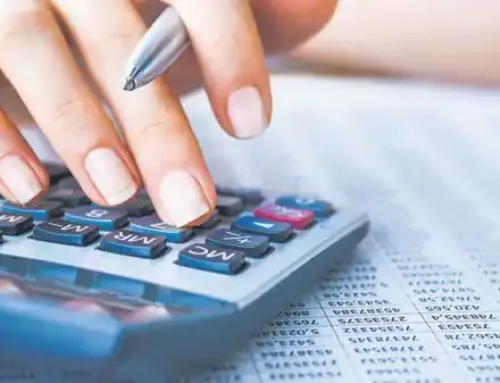For those of you who are starting a new business, it is essential to know your tax obligations. Every business owner must report their net profits on a either their personal tax return if they are unincorporated or a corporation tax return if they are incorporated.
In addition to income tax, it is essential to consider whether or not you should register and collect GST/HST and provincial sales taxes. There are a variety of questions around this topic:
WHAT IS GST AND HST?
GST stands for Goods and Services Tax while HST stands for Harmonized Sales Tax. Both of these are consumption taxes i.e. ultimately levied to the final consumer ,are added to most goods and services in Canada and are administered federally by Revenue Canada. The difference between GST and HST is that the former is applicable to all provinces without exception, while the latter (HST) only applies in specific provinces who elected to have their federal and provincial sales tax combined (harmonized).
Businesses effectively act as an agent of Revenue Canada (CRA) where they collect GST/HST from their customers and then remit (pay) these amounts to CRA.
Also Read: What You Should Know After You Have Incorporated
WHICH PROVINCES HAVE HST?
The provinces that have HST are
Ontario = 13%
New Brunswick = 15%
Newfoundland and Labrador = 15%
Nova Scotia = 15%
HOW IS GST AND HST CALCULATED?
GST and HST are calculated as a percentage of total value of the good or service purchased. For example if you a buy a pair of shoes that costs $100 anywhere in Canada there will be a minimum of GST of 5% or $50. If these shoes are bought in Ontario the HST (which includes the GST) will be 13% or $130. Usually, in Canada, these are added to the total price rather than being included.
WHO IS REQUIRED TO REGISTER FOR GST AND HST?
Any business that expects to have or currently has over $30,000 in sales over the past 4 quarters must be registered for GST and/or HST. When starting your business you must determine if this applies to you and if so, register with Revenue Canada (CRA).
It should be noted that taxi businesses must register regardless of their sales.
WHAT IS A SMALL SUPPLIER?
A small supplier is a business that has less than $30,000 in sales over a period of 4 quarters and is therefore not required to register. Once this threshold has been exceeded you are no longer considered to be a small supplier and must register.
CAN I REGISTER EVEN IF I’M NOT A SMALL SUPPLIER?
Yes, you can register if you are not a small supplier. The advantage of registering are outlined in this post on should you register for GST/HST
HOW DO YOU REGISTER FOR GST/HST?
Registering your business for GST/HST (which automatically happens at the same time) can be done online, by filling in a form and mailing or faxing it in or by phone. See here for additional information. Note that you can file for monthly, quarterly or annual GST/HST filing. Annual filing is recommended if your business is small and you do your accounting irregularly. Otherwise consider a quarterly or monthly filing. See here for guidance on choosing a GST/HST filing period
WHAT ARE YOUR OBLIGATIONS ONCE YOUR REGISTER?
Once you register, you must:
- Charge GST/HST to all of your customers unless they are international (see below)
- Track all amounts collected
- Remit amounts collected to CRA based on the due date that relates to your filing period. CRA will advise you of the due dates.
WHAT ARE INPUT TAX CREDITS?
An input tax credit refers to any GST/HST paid on expenses which can then be claimed back from CRA. This is offset against the amounts collected on sales. For example, if you have collected $1,500 in GST on your sales and paid $250 of GST and/or HST on expenses, you would only need to send the difference of $1,250 to CRA. In other words GST/HST paid on business related expenses is fully reimbursable as long as you are registered for GST/HST and your business is not exempt.
Also Read: Skills Modern-Day Accountants Need to Equip Themselves With
WHAT DOES IT MEAN TO BE ZERO RATED OR EXEMPT?
There are three main classifications of GST/HST. Everything discussed above are referred to as “taxable”.
Additionally there is category referred to as Zero Rated which means that GST/HST on goods and services is literally zero rated.
Exempt on the other hand means that GST/HST does not apply at all. Examples of this are basic groceries and most medical services.
The difference in practical terms is that if you have a zero rated sale, you can still claim input tax credits (GST/HST paid on expenses) while exempt goods and services do not allow you to claim input tax credits. In many cases, if you provide an exempt supply, you wouldn’t even register e.g. doctors, daycares etc.
CAN YOU CLAIM INPUT TAX CREDITS EVEN IF YOU HAVE NO (OR LOW) SALES?
Yes, you can be in a position where you have incurred expenses but not generated any sales yet. Or your input tax credits exceed the amount of GST/HST that you have collected on sales. In this case you might submit a return requesting a net refund. This is particularly applicable to startups who have high costs in the beginning and only start to generate sales further down the road.
HOW DO YOU FILE YOUR GST/HST RETURNS?
Your GST/HST returns can be filed directly through a business bank account, online through CRA my business account or by completing a paper form and mailing it in along with a cheque or paying directly at a bank.
WHAT IS PST AND HOW IS IT DIFFERENT FROM GST/HST?
PST refers to provincial sales tax and exists in 4 provinces which are British Columbia, Manitoba, Quebec and Saskatchewan.
These are separate from GST/HST and are administered provincially rather than federally like GST/HST.
The rules are specific in each province and should be reviewed to determine whether you need to register.
If your business is resident in Quebec, then you must register for QST (Quebec Sales Tax) at the same time as you register for GST/HST. It should be noted that GST/HST and QST are administered by Revenue Quebec in Quebec as it is part of GST/HST regime but a little more complicated (as tends to be the case in Quebec).

DO YOU NEED A NEW GST/HST NUMBER IF YOU INCORPORATE?
Yes, since a corporation is a separate legal entity you must register for a new number
WHAT IS THE QUICK METHOD?
The Quick Method is a way of reporting GST/HST where you remit a lower amount of GST/HST to government which is offset by a lower claim on input tax credits. This is particularly beneficial for service based businesses with low expenses. More on the Quick Method of Reporting GST/HST
WHAT RATE DO I CHARGE TO CUSTOMERS WHO ARE IN A DIFFERENT PROVINCE?
If your customer or client is located in a different province, in most cases you would charge them the GST/HST rate that prevails in the province in which they are located. So, if your business is in Alberta and you provide translation services to someone in Ontario you would charge them Ontario HST of 13%.
My article discusses whether you need to register for your QST if you are located in another province.
It should be noted that if you are providing services to other organizations rather than individual end consumers, you usually do not have to register for PST in other provinces if you are located outside of the province (you still have to register for GST/HST assuming you meet the threshold criteria of $30,000).
Also Read: 5 Best Modern Accounting Practices That Entrepreneurs Should Follow
DO I HAVE TO CHARGE GST/HST TO INTERNATIONAL CUSTOMERS
Since GST/HST is a consumption tax that applies to Canadians, usually you do not have to charge sales tax to customers/clients located outside of Canada. These customers are usually considered to be Zero rated which means you can claim the input tax credits on your expenses.



